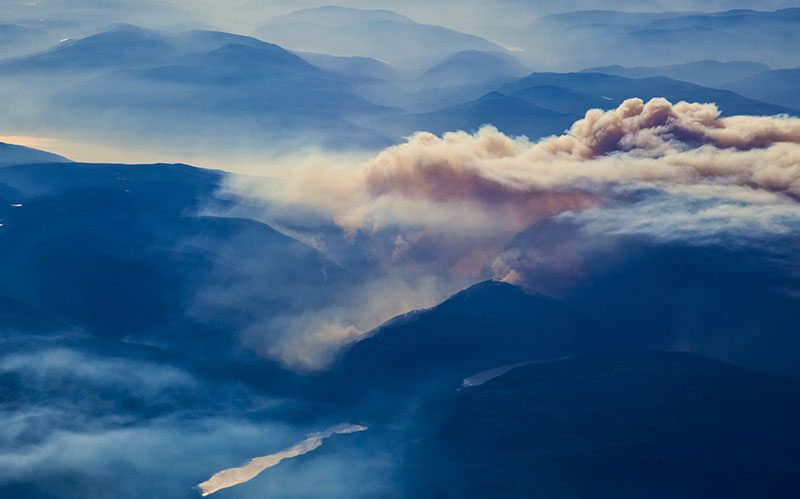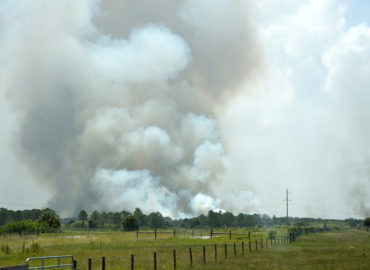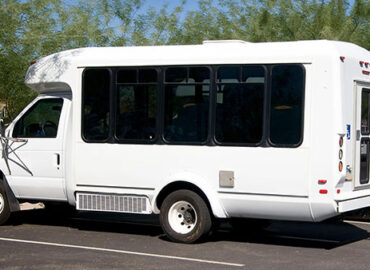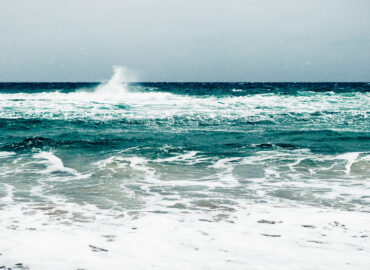Pennsylvania isn’t exactly the first state that comes to mind when discussing wildfire danger. Yet climate patterns, land management practices, and seasonal conditions have created a surprisingly volatile situation across the Commonwealth. And, here’s the thing: Many residents remain completely unaware of their actual risk level.
According to the Pennsylvania Department of Conservation and Natural Resources (DCNR), 2024 is the fifth straight year that the state’s wildfire count has surpassed 1,000. These wildfires swept through more than 3,000 acres.
The consequences extend far beyond burned acreage, however. Property damage, evacuation costs, and emergency response strain local budgets while putting lives at risk. Industry specialists observe that Pennsylvania’s unique geography—a mix of dense forests with suburban sprawl—creates particularly challenging fire suppression scenarios.
Here’s what fire management professionals and emergency planners consistently recommend Pennsylvania residents understand about their wildfire risk.
Pennsylvania Wildfires: A Seasonal Reality
While summer might be the hottest season, new vegetative growth typically creates a moisture barrier against wildfires. It is the spring and autumn seasons that represent Pennsylvania’s peak wildfire season. The spring wildfire season runs roughly from March through May, while the autumn wildfire season is from October to November, according to the DCNR.
In spring, dead vegetation from winter provides abundant fuel. And, as the days grow longer and warmer, the sun scorches bare trees, warms the ground, and dries surface fuels. In addition, strong and dry spring winds complete the deadly mix. Professionals in the field observe that wind patterns during spring months can transform a small brush fire into a major incident within minutes.
As assistant district forester for Rothrock State Forest Jodi Skipper warns: “If it’s east-facing slope and it’s got slope aspect, the wind is driving it up the slope, it’s going to cause it to spread quicker and become larger.”
Meanwhile, in autumn, dead leaves fall and accumulate on the ground. This deep and fluffy layer can provide ample fuel to any spark that might chance to fall upon it.
Geographic Hotspots: Where Danger Concentrates
The state’s topography creates natural fire corridors through mountain valleys and ridge systems. Professionals consistently identify several key risk factors that amplify danger in specific regions.
Wildland-Urban Interface
Forested residential areas, which industry professionals call the “wildland-urban interface” (WUI), present particular challenges.
“There’s more population mixed in the wild areas,” Mike Kern, Pennsylvania’s chief forest fire warden, told Phys.org. “So even a small fire here can impact somebody’s house … or property or lives because there’s more population and spread that spread throughout the area.”
These zones, where homes meet forest, have expanded significantly across Pennsylvania in recent years. According to NBC10 Philadelphia, over 50% of homes in dozens of counties in the state are located in a wildland-urban interface, and this trend is becoming more and more common.
Table 1. Pennsylvania Counties with Over 80% Risk of Wildfire.
| County | Percent of Housing in Wildland-Urban Interface |
| Pike County | 98.2% |
| Monroe County | 97.8% |
| Carbon County | 96.7% |
| Cambria County | 94.1% |
| Schuylkill | 93.1% |
| Clinton County | 92.2% |
| Wayne County | 91.9% |
| Blair County | 91.3% |
| Venango County | 90.4% |
| Perry County | 89.6% |
| Elk County | 89.4% |
| Indiana County | 89.1% |
| Mifflin County | 88.8% |
| Armstrong County | 87.9% |
| Forest County | 86.9% |
| Jefferson County | 86.7% |
| Wyoming County | 85.2% |
| McKean County | 84.2% |
| Warren County | 83.7% |
| Huntingdon County | 83.5% |
| Clarion County | 82.1% |
| Cameron County | 81.8% |
| Greene County | 81.7% |
| Clearfield County | 81.1% |
Data taken from this map by Ali Ingersoll, NBC10 Investigative Content Producer. Source: U.S. Fire Administration
Fire suppression specialists note that defending properties in these areas requires specialized strategies and equipment that many rural fire departments struggle to maintain.
Factors That Create Pennsylvania’s Fire-Perfect Conditions
Several factors combine to create Pennsylvania’s wildfire vulnerability. Foremost among these are the following three conditions that are necessary for a wildfire to occur, according to the DCNR:
- An available fuel source, such as dried grass or leaves,
- Dry conditions, including low relative humidity, and
- An ignition source — some way for the fire to start.
Fuel Load
Spring and autumn months, which is the state’s peak wildfire season, check off the first two conditions. Both seasons provide ample dead leaves and dry vegetation.
Climate Change
Weather patterns have shifted noticeably over recent decades. Climate specialists observe that Pennsylvania, along with the rest of the Northeast, now experiences longer dry periods punctuated by intense precipitation events.
“It’s either wet or dry, and we don’t have these transition periods,” Brian Fuchs, a climatologist at the National Drought Mitigation Center at the University of Nebraska-Lincoln, told NBC News. “That is definitely one of the known impacts of climate change. We go from one regime to the next — wet to dry, dry to wet — and it seems like that’s happening more rapidly.”
This pattern—dry conditions followed by rapid vegetation growth followed by more dry conditions—creates what fire management professionals describe as a “fuel production cycle.” Because of this, the frequency or number of wildfires will be significantly impacted.
“The big picture is that by mid-century [forest and climate experts] think that the risk for large wildfires in sort of Western Pennsylvania down into West Virginia will probably about double,” Alan Taylor, a Penn State University professor of geography and ecology who studies fires, told Phys.org.
In addition, droughts in the region over the last few decades have also resulted increased wildfire risk, along with crop production losses and water use restrictions. Pennsylvania, in particular, has experienced increasingly frequent drought periods over the past decade, according to meteorological data. When these dry spells coincide with the spring fire season, the risk multiplies exponentially.
Human Activity
Human factors contribute significantly to ignition risk. The DCNR reports that 99% of Pennsylvania wildfires result from human activity (both intentional and accidental). With more people moving into wildland-urban interfaces, there is an increased risk of fires caused by power lines, equipment use, campfires, and debris burning. Debris burning, in particular, is a major culprit of forest fires in the state.
“A careless person burning trash or yard waste can be responsible for causing wildfires that burn thousands of acres of valuable Pennsylvania forests,” the DCNR said. “These fires most frequently start in someone’s backyard and travel through dead grass and leaves into bordering woodlands.”





